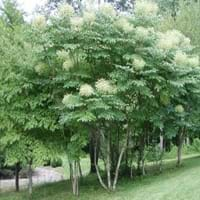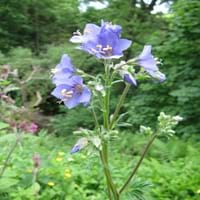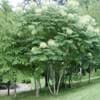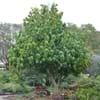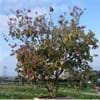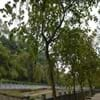Life Span
Perennial
Perennial
Origin
Mid-Atlantic United States, Southeastern United States, South-Central United States, Texas
Hybrid origin
Types
Not Available
Not Available
Habitat
Dappled Shade, Shady Edge, Woodland Garden Secondary
Cold Regions, Temperate Regions
USDA Hardiness Zone
4-9
4-8
Sunset Zone
3a, 3b, 4, 5, 6, 7, 8, 9, 14, 15, 16, 17, 18, 19, 20, 21, 22, 23, 24
1a, 1b, 2a, 2b, 3a, 3b, 4, 5, 6, 7, 8, 9, 10, 11, 14, 15, 16, 17
Habit
Thicket/Colonizing
Cushion/Mound-forming
Flower Color
White, Green, Ivory
Blue, Lavender
Flower Color Modifier
Bicolor
Not Available
Fruit Color
Purple, Black
Non Fruiting Plant
Leaf Color in Spring
Green, Blue Green, Dark Green
Green, Purple
Leaf Color in Summer
Green, Blue Green, Dark Green
Green, Purple
Leaf Color in Fall
Yellow, Green, Purple, Blue Green, Dark Green, Yellow green
Green, Purple
Leaf Color in Winter
Not Available
Light Green
Leaf Shape
bipinnate
Linear
Plant Season
Spring, Summer, Fall, Winter
Spring, Summer, Fall
Sunlight
Full Sun, Partial Sun
Partial Sun, Partial shade
Type of Soil
Clay, Loam, Sand
Clay, Loam, Sand
The pH of Soil
Acidic, Neutral, Alkaline
Acidic, Neutral, Alkaline
Soil Drainage
Well drained
Average
Bloom Time
Summer
Early Spring, Spring, Late Spring, Early Summer
Tolerances
Pollution, Soil Compaction
Drought
Where to Plant?
Ground
Container, Ground
How to Plant?
Cuttings, Divison, Seedlings
Seedlings
Plant Maintenance
Medium
Medium
Watering Requirements
Needs high amount of water
Average Water Needs, Keep ground moist, Water more in summer
In Summer
Lots of watering
Lots of watering
In Spring
Moderate
Moderate
In Winter
Average Water
Average Water
Soil pH
Acidic, Neutral, Alkaline
Acidic, Neutral, Alkaline
Soil Type
Clay, Loam, Sand
Clay, Loam, Sand
Soil Drainage Capacity
Well drained
Average
Sun Exposure
Full Sun, Partial Sun
Partial Sun, Partial shade
Pruning
Remove damaged leaves, Remove dead branches, Remove dead leaves
Remove damaged leaves, Remove dead branches, Remove dead leaves
Fertilizers
All-Purpose Liquid Fertilizer
All-Purpose Liquid Fertilizer, as it is a flowering plant, use high phosphorous content fertilizer
Pests and Diseases
Aphids, Leaf spot, Mealybugs
Red blotch
Plant Tolerance
Drought
Drought
Flower Petal Number
Single
Single
Foliage Texture
Coarse
Fine
Foliage Sheen
Matte
Matte
Attracts
Bees, Butterflies, Insects, Not Available
Butterflies
Allergy
Skin irritation
Not Available
Aesthetic Uses
Borders, Woodland margins
Beautification, Showy Purposes
Beauty Benefits
Not Available
Not Available
Environmental Uses
Air purification
Air purification
Medicinal Uses
Alterative, Analgesic, Diaphoretic, Opthalmic
Black Dyes, Not Available
Part of Plant Used
Bark, Leaves, Root
Not Available
Other Uses
Used as a potherb
Not Available
Used As Indoor Plant
No
Yes
Used As Outdoor Plant
Yes
Yes
Garden Design
Feature Plant, Foundation, Mixed Border
Feature Plant, Mixed Border, Rock Garden / Wall, Wildflower
Botanical Name
ARALIA spinosa
Polemonium caeruleum
Common Name
American Angelica Tree, Devil's Walking Stick, Hercules' Club
Jacob's Ladder
In Hindi
Devil's Walking Stick
Jacob's Ladder
In German
Teufelsspazierstock
Jacob's Ladder
In French
Walking bâton du diable
Jacob's Ladder
In Spanish
Bastón del Diablo
Jacob's Ladder
In Greek
Περπάτημα Stick διαβόλου
Jacob's Ladder
In Portuguese
Vara andando de diabo
Jacob's Ladder
In Polish
Diabelski laska
Jacob's Ladder
In Latin
Virgam diaboli
Jacob's Ladder
Phylum
Magnoliophyta
Tracheophyta
Class
Magnoliopsida
Magnoliopsida
Family
Araliaceae
Polemoniaceae
Clade
Angiosperms, Asterids, Eudicots
Angiosperms, Asterids, Eudicots
Tribe
Not Available
Not Available
Subfamily
Aralioideae
Not Available
Number of Species
Not Available
Season and Care of Devil's Walking Stick and Jacob's Ladder
Season and care of Devil's Walking Stick and Jacob's Ladder is important to know. While considering everything about Devil's Walking Stick and Jacob's Ladder Care, growing season is an essential factor. Devil's Walking Stick season is Spring, Summer, Fall and Winter and Jacob's Ladder season is Spring, Summer, Fall and Winter. The type of soil for Devil's Walking Stick is Clay, Loam, Sand and for Jacob's Ladder is Clay, Loam, Sand while the PH of soil for Devil's Walking Stick is Acidic, Neutral, Alkaline and for Jacob's Ladder is Acidic, Neutral, Alkaline.
Devil's Walking Stick and Jacob's Ladder Physical Information
Devil's Walking Stick and Jacob's Ladder physical information is very important for comparison. Devil's Walking Stick height is 300.00 cm and width 460.00 cm whereas Jacob's Ladder height is 20.30 cm and width 27.90 cm. The color specification of Devil's Walking Stick and Jacob's Ladder are as follows:
Devil's Walking Stick flower color: White, Green and Ivory
Devil's Walking Stick leaf color: Green, Blue Green and Dark Green
Jacob's Ladder flower color: Blue and Lavender
- Jacob's Ladder leaf color: Green and Purple
Care of Devil's Walking Stick and Jacob's Ladder
Care of Devil's Walking Stick and Jacob's Ladder include pruning, fertilizers, watering etc. Devil's Walking Stick pruning is done Remove damaged leaves, Remove dead branches and Remove dead leaves and Jacob's Ladder pruning is done Remove damaged leaves, Remove dead branches and Remove dead leaves. In summer Devil's Walking Stick needs Lots of watering and in winter, it needs Average Water. Whereas, in summer Jacob's Ladder needs Lots of watering and in winter, it needs Average Water.
